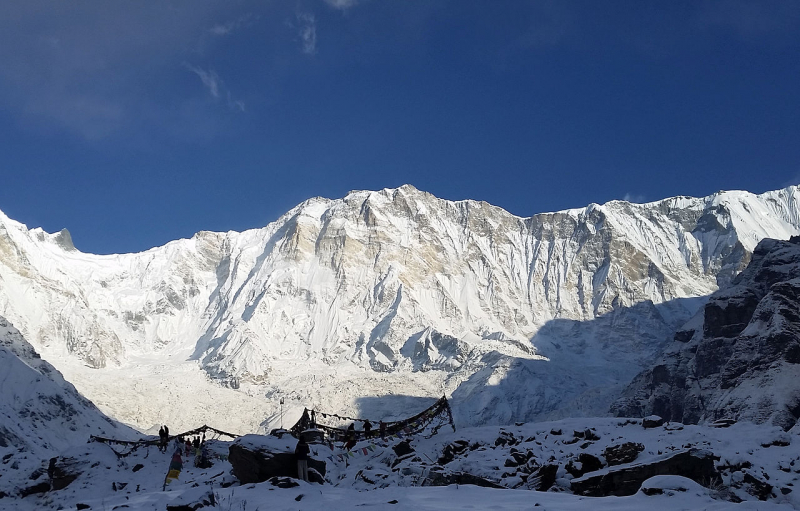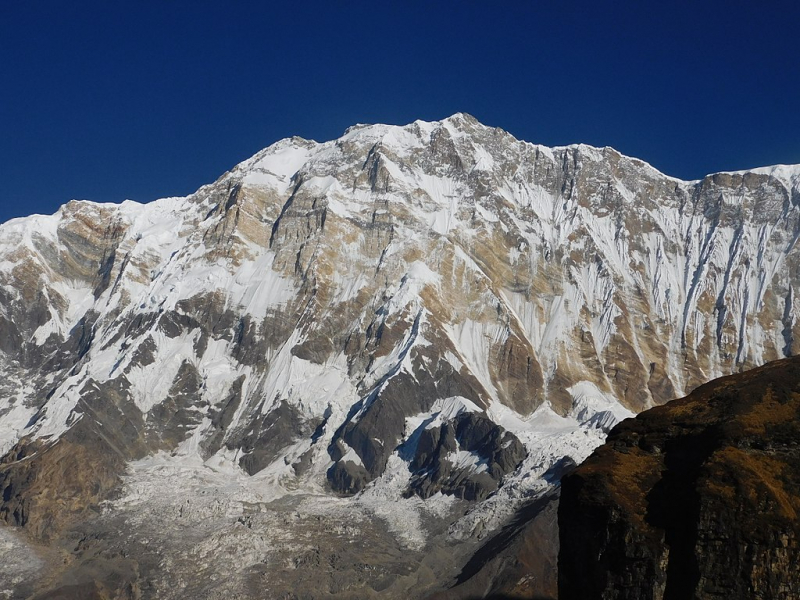Annapurna

Annapurna, one of the highest mountains in Nepal is a mountain in Nepal's Gandaki Province's Annapurna mountain range in north-central Nepal. At 8,091 meters above sea level, it is the world's tenth highest mountain, and its ascent is notorious for its difficulty and risk.
In 1950, Maurice Herzog led a French expedition up the north face to the summit, making it the first eight-thousand-meter peak to be successfully climbed. The 7,629-square-kilometer Annapurna Conservation Area, Nepal's first and largest conservation area, protects the entire massif and surrounding area. Annapurna Sanctuary and Annapurna Circuit are two world-class hikes available in the Annapurna Conservation Area.
Annapurna I Main had the greatest mortality-to-summit rate of all the main eight-thousander summits for decades; nevertheless, it has witnessed considerable climbing success in recent years, with the fatality rate reducing from 32% to just under 20% from 2012 to 2022. This value is just below the most recent fatality rate estimates for K2, which are around 24%. Avalanche hazard, unpredictable weather, and the highly steep and committing character of the mountain's climbing routes, particularly its 3,000 meter south face, regarded as one of the world's most difficult climbs, continue to pose serious threats to climbers.
It is also a deadly peak for trekkers, as evidenced by the deaths of at least 43 trekkers in a 2014 snowfall near it and Dhaulagiri. In 2022, 365 people had reached the peak of Annapurna I, with 72 people dying in the process.
Location: Annapurna Himalaya
Elevation: 8,091m











